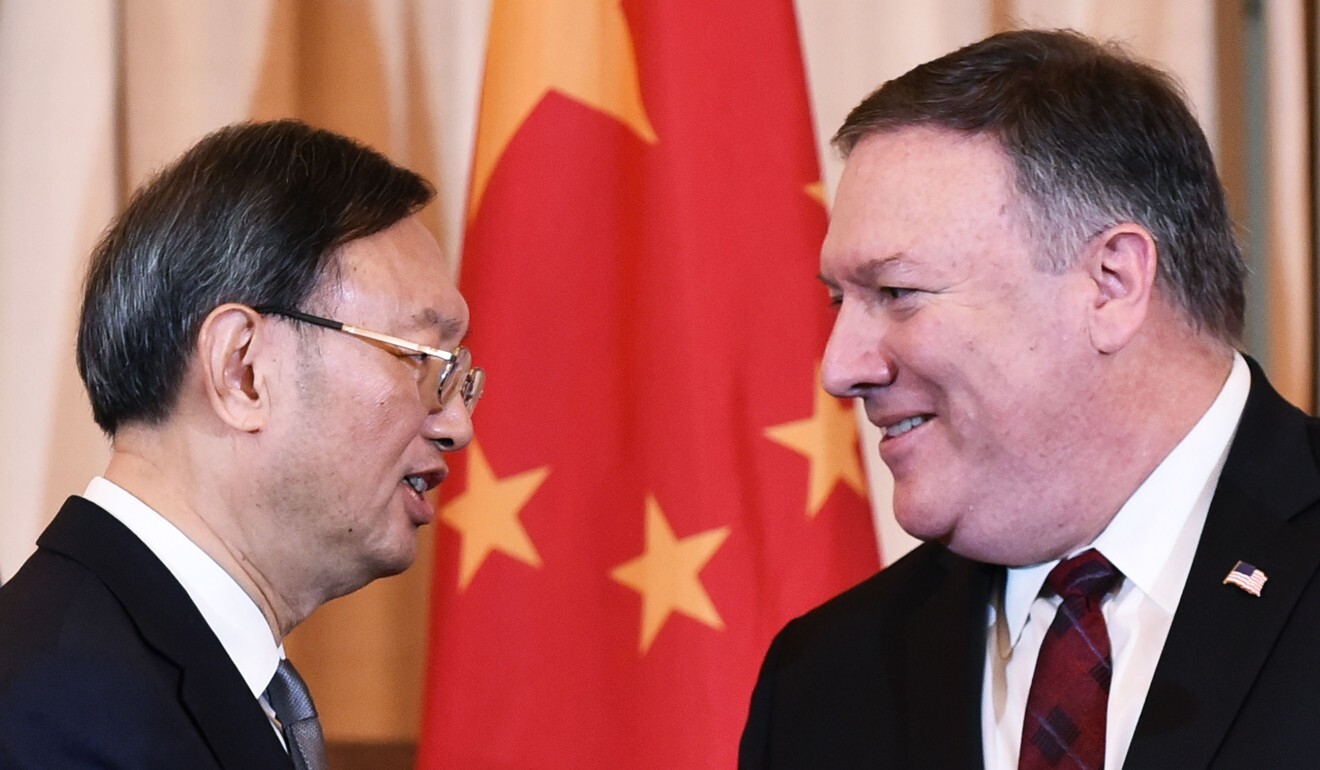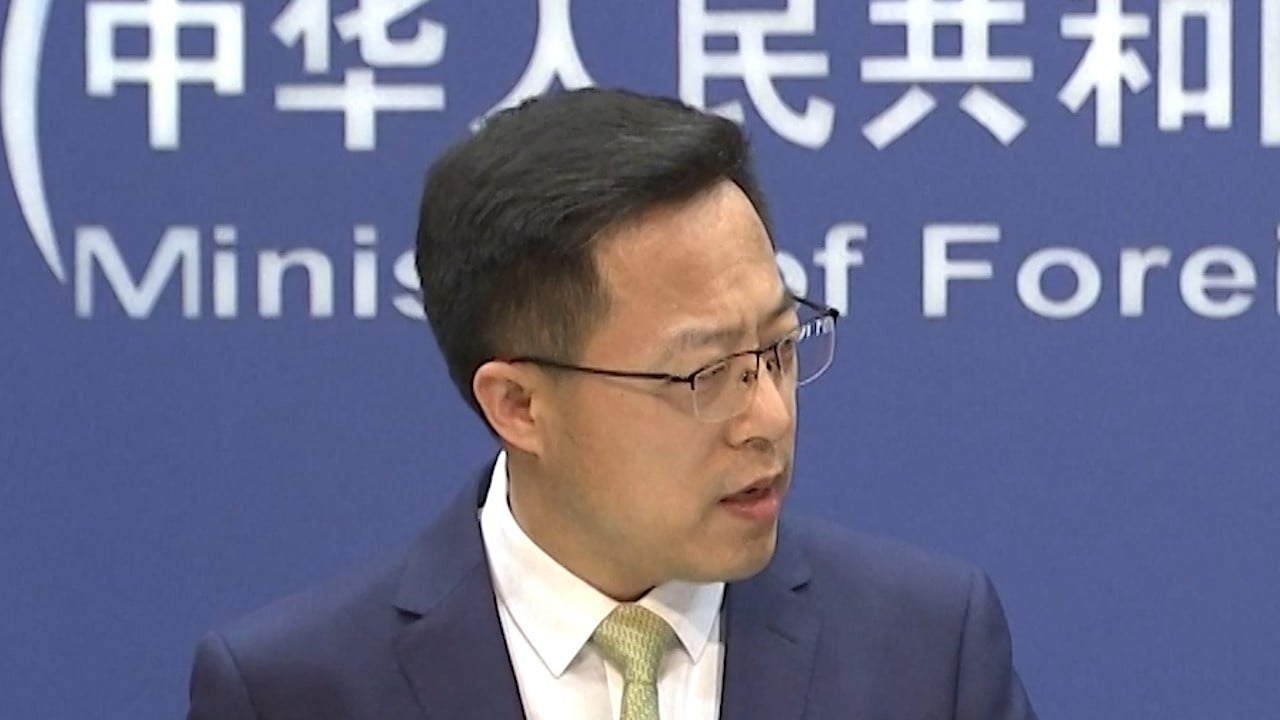
US-China relations: both sides set to talk tough at Alaska summit – but it still may be progress of a kind
- The meeting between Secretary of State Antony Blinken and China’s foreign policy chief Yang Jiechi will allow them to set out their red lines
- However, some observers believe they will also be able to provide a degree of reassurance
The US and China are both expected to adopt a tough stance and set out their red lines during Thursday’s meeting between their most senior diplomats in Alaska, but observers believe it will still be an improvement on the last meeting between the two sides.
This week, Yang will once again travel to a location that is roughly halfway between Beijing and Washington to meet Pompeo’s successor Antony Blinken.
They will be joined by Chinese Foreign Minister Wang Yi and Jake Sullivan, Joe Biden’s national security adviser.
With mildly positive signals from both sides, observers believe there is a possibility that the summit in Anchorage will yield some progress, and the two are also likely to lay out their positions.

“I would expect to see a firm reiteration of national concerns and red lines, but also an effort by both sides to convey a degree of reassurance to the other,” said Sourabh Gupta, a senior fellow at the Institute for China-America Studies in Washington.
“But there is no doubt that the espousal of concerns and red lines will dominate the conversation in Anchorage.”
Wang reiterated those red lines just last week at his annual press conference during the national legislative meeting, saying that Taiwan, the South China Sea, Xinjiang and Hong Kong were internal matters that should be left to the Chinese people to manage.
But all these issues almost inevitably end up high on the US list of talking points, said Yun Sun, director of the China programme at the Stimson Centre, a Washington-based think tank.
“It is more likely to be an occasion where two sides reiterate their positions and express their concerns over the policies of the other side,” she said.
Biden administration approves submarine tech exports to Taiwan
“Human rights issues, including Xinjiang and Hong Kong, inevitably would be high on the US agenda, and I don’t think there is much China could do or deliver in those regards.”
On Friday Sullivan briefed the media about the meeting and said that Washington regarded most of the issues Wang had warned outsiders to avoid as touching its “fundamental interests and values”.
Beyond that, Sullivan added that the US was also concerned about China’s recent confrontation with Australia, the territorial disputes with Japan in the East China Sea and the border clashes with India.
Gupta said the US may try to deter China from pushing its claims on Taiwan and in the East and South China Sea and push for action over commercial espionage, cyber theft and what it regards as unfair practices in the hi-tech sector. But he said there were limits to what it could do in other areas.

01:19
After Quad summit discusses China threat, Beijing says ‘cliques’ drive wedge between countries
“On Xinjiang and Hong Kong, on the other hand, the Biden administration would do well to articulate its extreme displeasure with ongoing developments but not be too prescriptive in laying down stringent red lines,” said Gupta.
“The main reason is that it can enforce its red lines by way of unilateral sanctions policy but cannot do much beyond that in terms of deterring Beijing’s conduct.”
Chinese officials have also referred to the Alaska talk as “a strategic dialogue”, evoking the Obama era mechanism under which senior officials from both sides met to discuss key issues.
But Blinken quickly moved to damp down these expectations stating bluntly that it was not a strategic dialogue.
“That Yang and Wang are willing to travel to Alaska suggests that the Chinese side is taking this meeting seriously,” said Zhiqun Zhu, professor of political science and international relations and chair of Department of International Relations at Bucknell University.
‘Quad’ backs ‘democratic’ Indo-Pacific region, cites Chinese ‘aggression’
But he also noted that the political atmosphere in Washington would not allow Blinken to travel to Beijing after visiting Japan and South Korea.
The same difference in rhetoric was also noted by Sun from the Stimson Centre.
“If there is any positive geopolitical significance, it might be the fact that the US and China are talking to each other again and having a dialogue is better than not having a dialogue,” she said. “I think the Chinese side emphasises this positive shift a lot. I doubt the US sees it in the same light.”
Some observers were more hopeful, noting that China’s two most senior diplomats would be visiting the United States.
“If all the precious time is spent on repeating each side’s established stance, it should not be called a dialogue,” said Pang Zhongying, an international affairs professor at Ocean University in China.
“This is at least a visit to the United States, and [the Chinese side] should try to end up with a list of issues where the US is willing to cooperate.”
Since both sides have expressed an interest in working together on climate change, they could discuss details to be followed up at the UN Biodiversity Conference, which takes place in the Chinese city of Kunming in May and at November’s climate conference in Glasgow, Scotland.
The two sides could also seek to pave for Xi Jinping and Biden to meet at May’s World Economic Forum in Singapore in May, or October’s G20 meeting in Italy.


